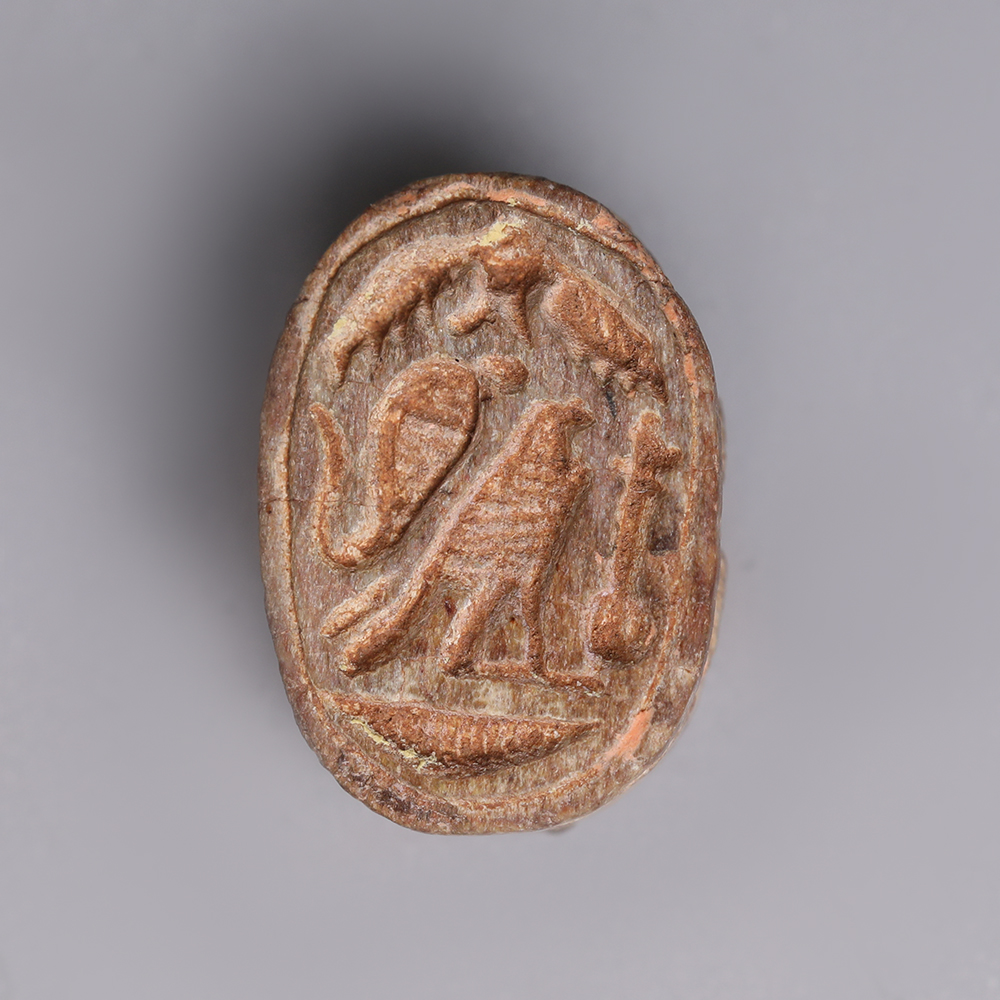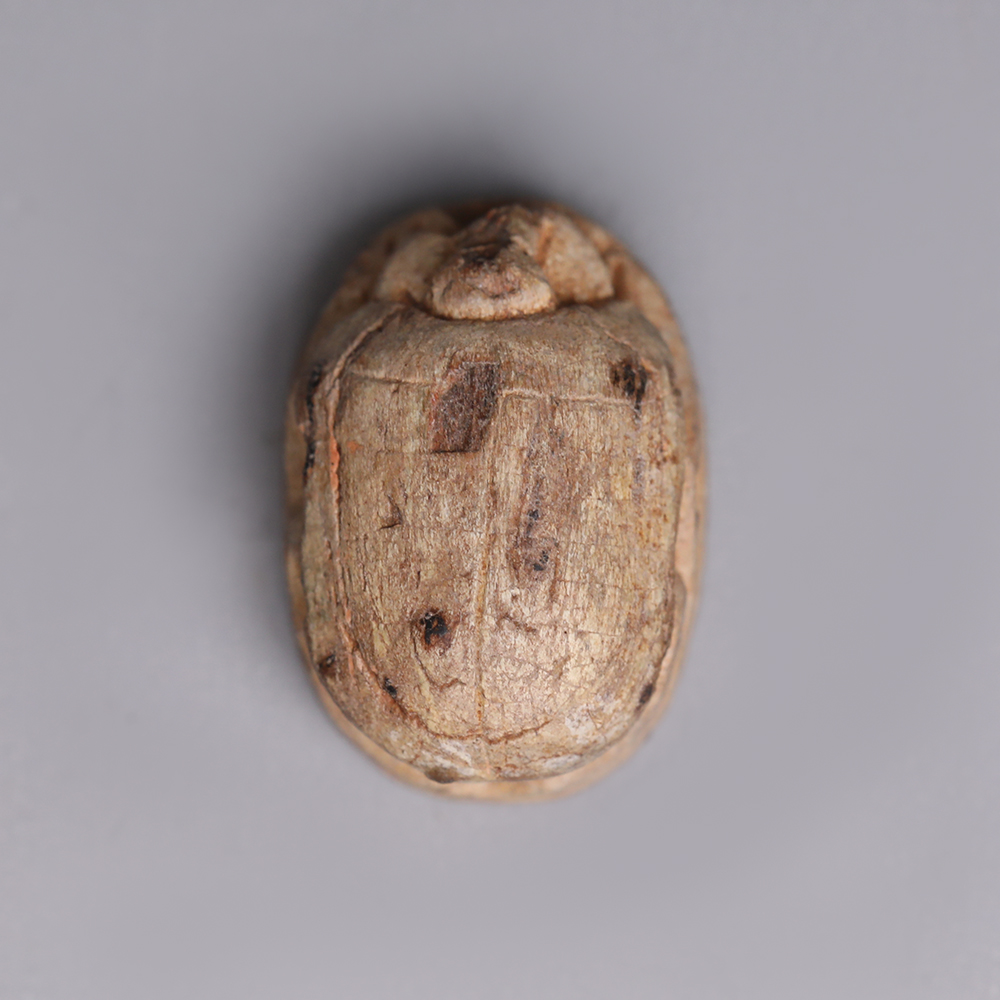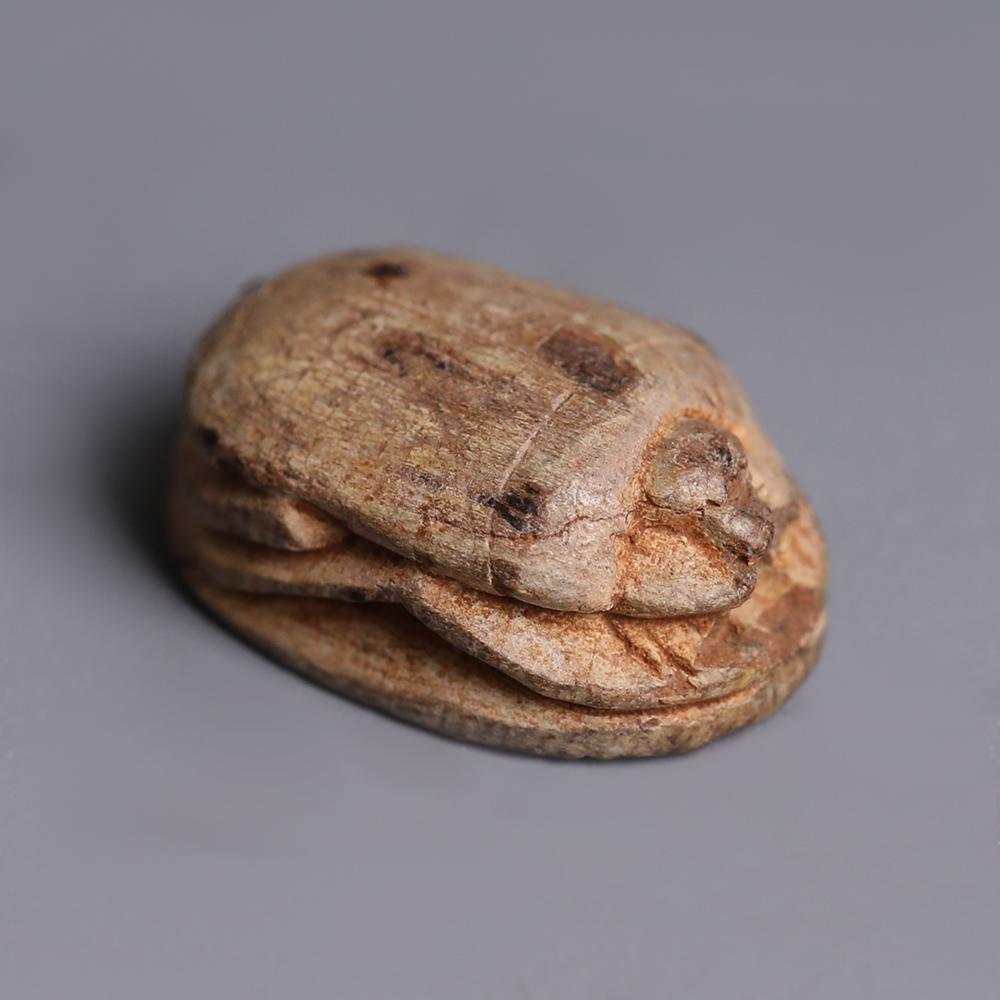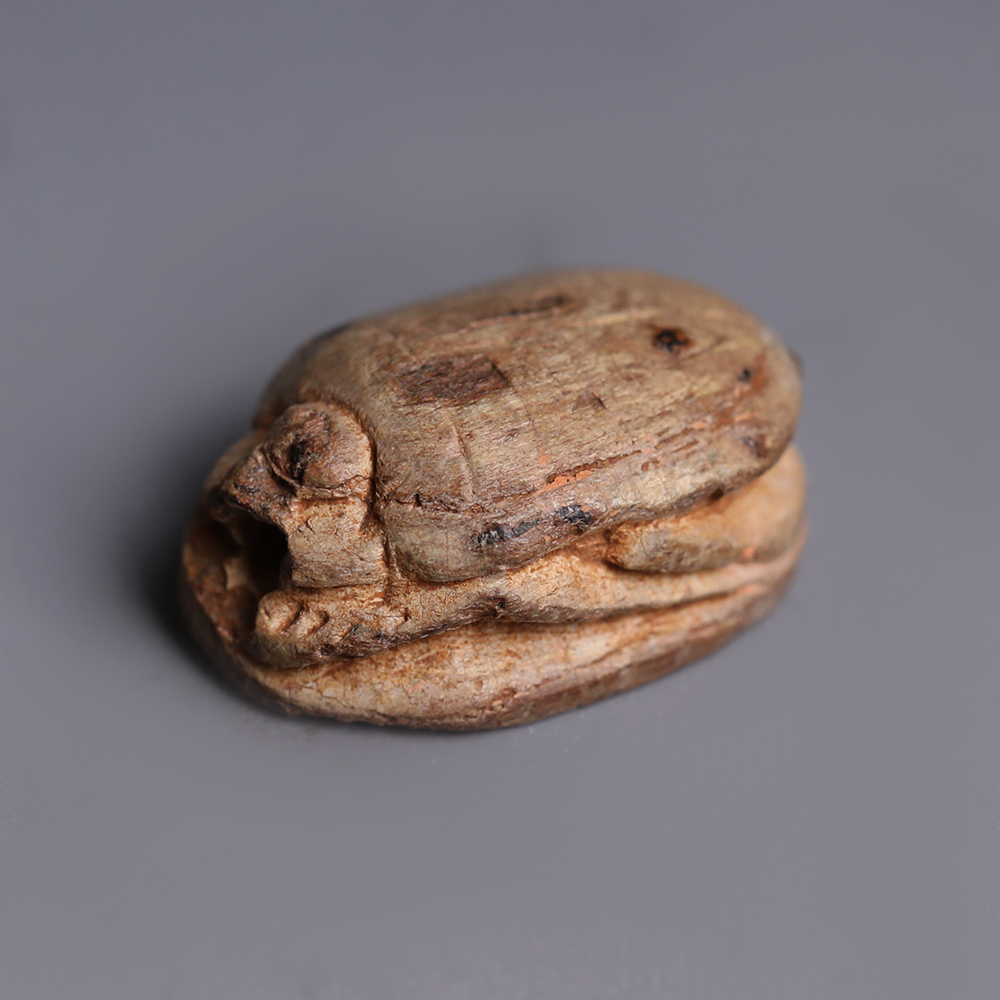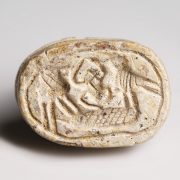Such scarabs, depicting a falcon figure and flanked by the uraeus were exceedingly popular in the Second Intermediate Period. Whilst scarabs from this period had a limited specific meaning, the hieroglyphs depicted suggest artists were very much aware of their apotropaic values. There are three gods and goddesses represented on this particular scarab, invoked for their protective associations; Horus, Nekhbet and Wadjet. The latter two goddesses were also known as the ‘Two Ladies’ when represented together and depict the unification of Lower and Upper Egypt. They are also used in the titular of the pharaoh, as part of his five names. Thus the two goddess and the falcon also represent the power of the pharaoh as a living god.
To find out more about Ancient Egyptian amulets please see our relevant blog post: Egyptian Amulets and their Meanings.
